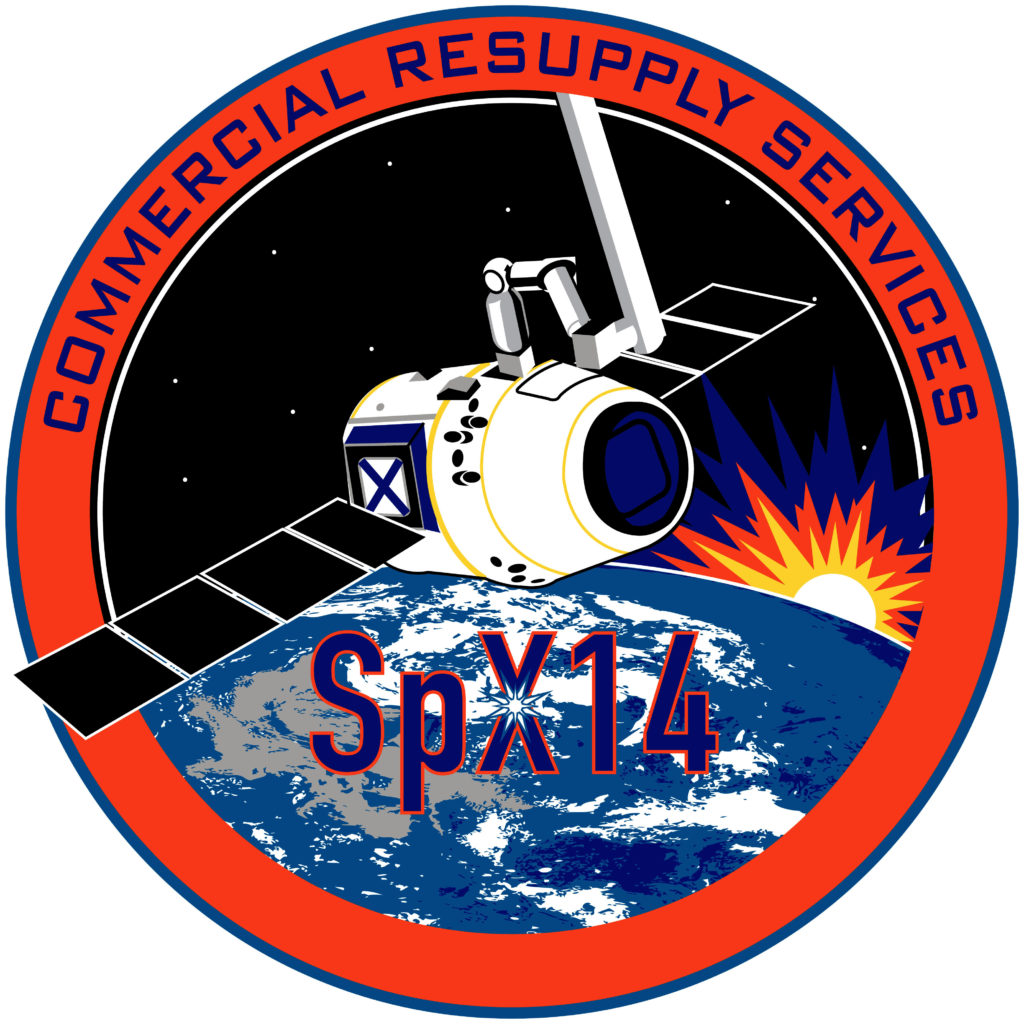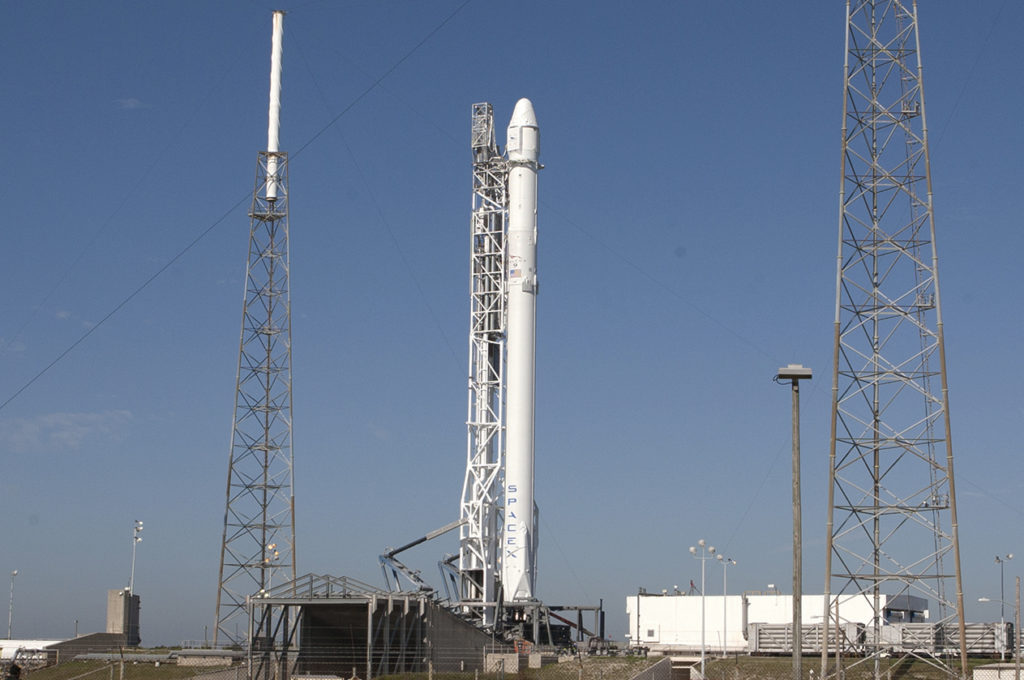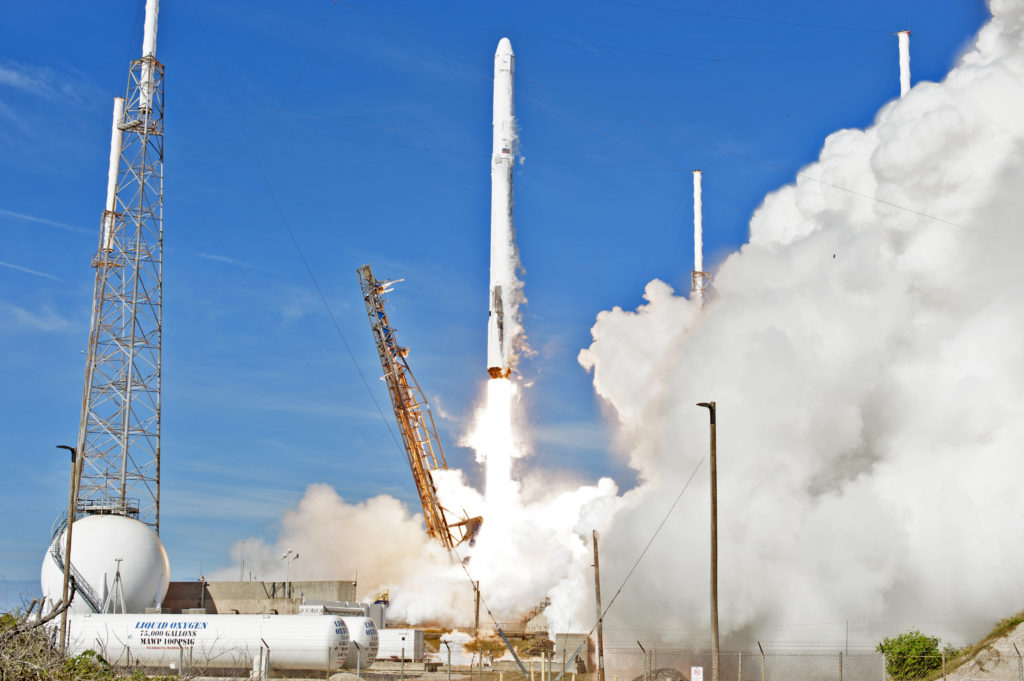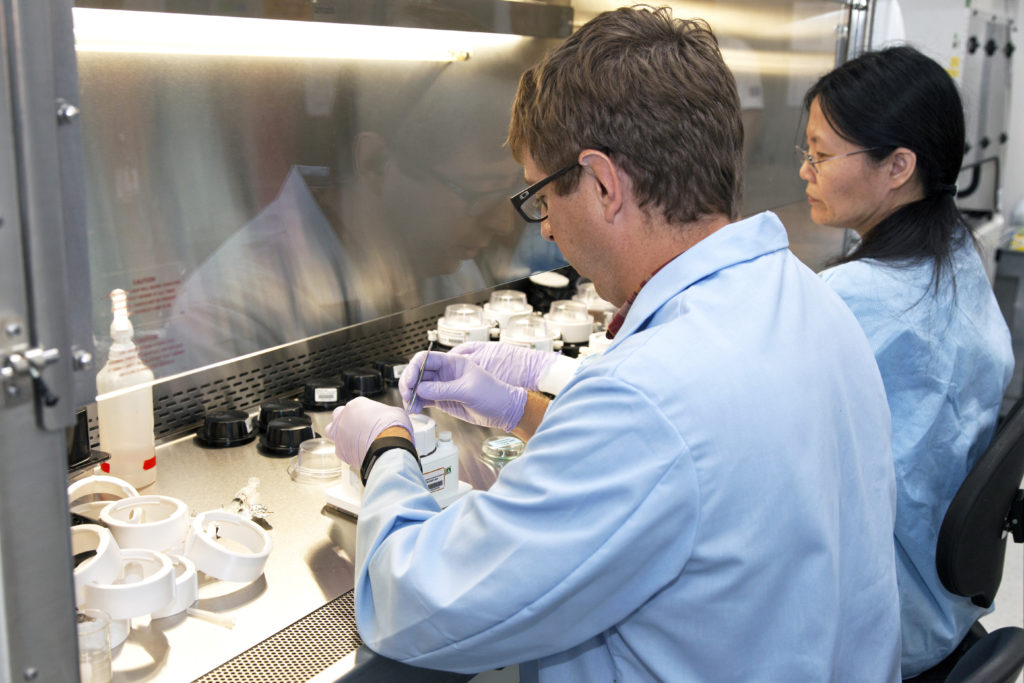
Photo credit: NASA/Daniel Casper
During SpaceX’s 14th Commercial Resupply Services Mission to the International Space Station for NASA, the Dragon spacecraft is packed with more than 5,800 pounds of supplies, equipment and several science investigations for the crew aboard the station.
Among the science experiments are:
Capturing Sprites and Elves
The Atmosphere-Space Interactions Monitor (ASIM) surveys severe thunderstorms in Earth’s atmosphere and upper-atmospheric lightning, or transient luminous events, from its perch on the exterior of the European Space Agency (ESA) Columbus module. These include sprites, flashes caused by electrical break-down in the mesosphere; the blue jet, a discharge from cloud tops upward into the stratosphere; and ELVES, concentric rings of emissions caused by an electromagnetic pulse in the ionosphere.
Metal Powder Fabrication
The NASA Sample Cartridge Assembly (MSL SCA-GEDS-German) experiment determines underlying scientific principles for a fabrication process known as liquid phase sintering, in microgravity and Earth-gravity conditions. On Earth, liquid phase sintering works like building a sandcastle with just-wet-enough sand. Heating a powder forms interparticle bonds and formation of a liquid phase accelerates this solidification, creating a rigid structure. But in microgravity, settling of powder grains does not occur and larger pores form, creating more porous and distorted samples than Earth-based sintering.
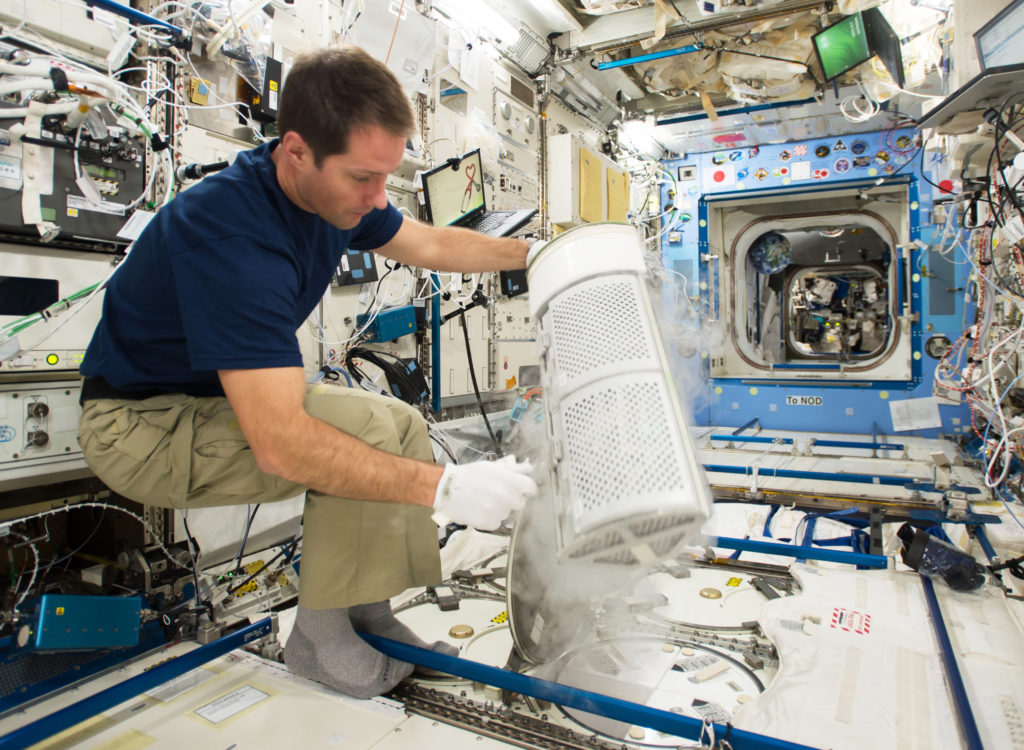
Photo credits: NASA
Testing Materials in Space
The Materials International Space Station Experiment Flight Facility (MISSE-FF) provides a unique platform for testing how materials, coatings and components react in the harsh environment of space, which includes exposure to ultraviolet and ionizing radiation, atomic oxygen, charged particles, thermal cycles, electromagnetic radiation and micro-meteoroids. The testing benefits a variety of industries, including automotive, aeronautics, energy, space, and transportation.
Patching up Wounds
Wound Healing tests a patch containing an antimicrobial hydrogel that promotes healing of a wound while acting as a scaffold for regenerating tissue. Reduced fluid motion in microgravity allows more precise analysis of the hydrogel behavior and controlled release of the antibiotic from the patch. This novel patch could serve as a non-surgical treatment for military combat wounds and reduce sepsis, or systemic inflammation, usually caused by contamination of an open wound.
Drug Development in Space
Comparative Real-time Metabolic Activity Tracking for Improved Therapeutic Assessment Screening Panels examines effects of microgravity on the metabolic impact of five different therapeutic compounds, evaluating the use of autobioluminescent human tissue culture for continuous tracking of metabolic activity without destroying the sample. This investigation determines the feasibility of developing improved pharmaceuticals in microgravity using a new method to test the metabolic impacts of drug compounds. This could lead to more effective, less expensive drugs.
Read more about Science Launching on Next Resupply Mission at: https://go.nasa.gov/2Isu6rt


